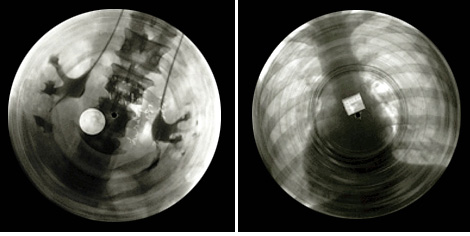
By Andrew Liszewski
Here’s an interesting story. In the 1950s there was very little access to western music in the USSR so people had to rely on records coming into the country from eastern Europe where limitations were less strict. As a result the influx of records coming in from beyond the iron curtain was very small and of course made the records themselves very expensive.
To compensate for this a group of enterprising and technically inclined people learned to make copies of these recordings with a converted phonograph. The cheapest and most available material to make these copies on turned out to be discarded x-ray plates and in only a few years millions of duplications were created and distributed throughout the country. These copies would only last about five months but were also only about one-fifth the price of an actual record so became very popular.
The process became known as ‘Roentgenizdat’ and was unfortunately shut down and made illegal in the late 1950s but thankfully many of these old recordings still exist today in private collections all over the world like the two pictured above.
[X-Ray Sound Recordings] VIA [New Scientist Technology Blog]



Yup, it was referred to as “bone music” and is on the Dead Media Archive.
http://www.deadmedia.org/notes/7/073.html
man, i’d love to get my hands on one of these…
funny, but this is sort of common knowledge in russia, and it never occured to me that it was unique to soviet union.
one correction, though. not that it wasn’t made illegal, self publishing in any form was prohibited at all times in soviet union. but in and of itself that wouldnt have killed “boneizdat” as it hasnt other forms of underground publishing. i think (and its just my personal opinion) this “technology” was simply gradually replaced by tape recorders.
thanks for digging up this nostalgia fodder for us!
Does anyone know the exact process used to copy the records?
Does anyone know the exact process used to copy the records onto x-ray film?